Nothing beats sipping a warm cup of tea made with herbs you’ve grown yourself. The best part? You don’t need a backyard or a big budget. These DIY tea garden ideas are designed for small spaces—and they’ll bring charm, calm, and a fresh aroma right into your home.
1. Vertical Wall Tea Garden
How to Do It:
Find a wooden pallet or vertical planter rack. Attach small pots or containers using hooks or clamps. Plant herbs like mint, chamomile, lemon balm, and arrange them in a vertical display. Mount it on a sunny wall or balcony.

2. Teacup Herb Planters
How to Do It:
Collect old teacups (thrift stores are great). Drill small drainage holes in the bottom. Fill with potting soil and plant small herbs like thyme or lavender. Line them up on a windowsill for a dainty display.
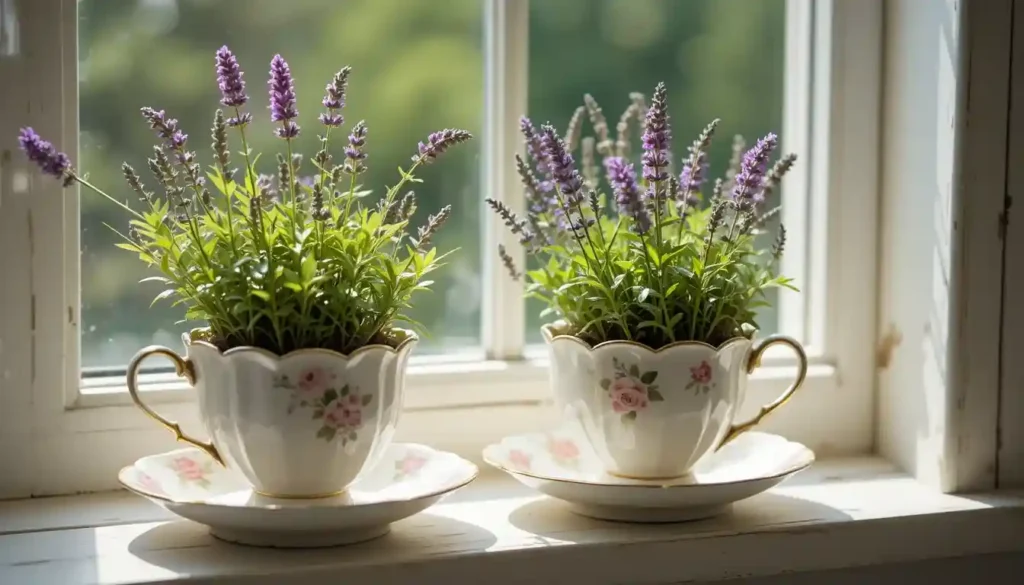
3. Hanging Macramé Herb Garden
How to Do It:
Use macramé plant hangers (buy or DIY) and hang 3–4 small pots at different levels. Choose lightweight herbs like lemon verbena or peppermint. Hang near a window or on a balcony rail.

4. Tiered Stand Tea Garden
How to Do It:
Buy or build a 3-tiered wooden or metal stand. Place herbs like basil, chamomile, and rosemary on each tier based on sunlight needs. Keep near a sunny corner or balcony.
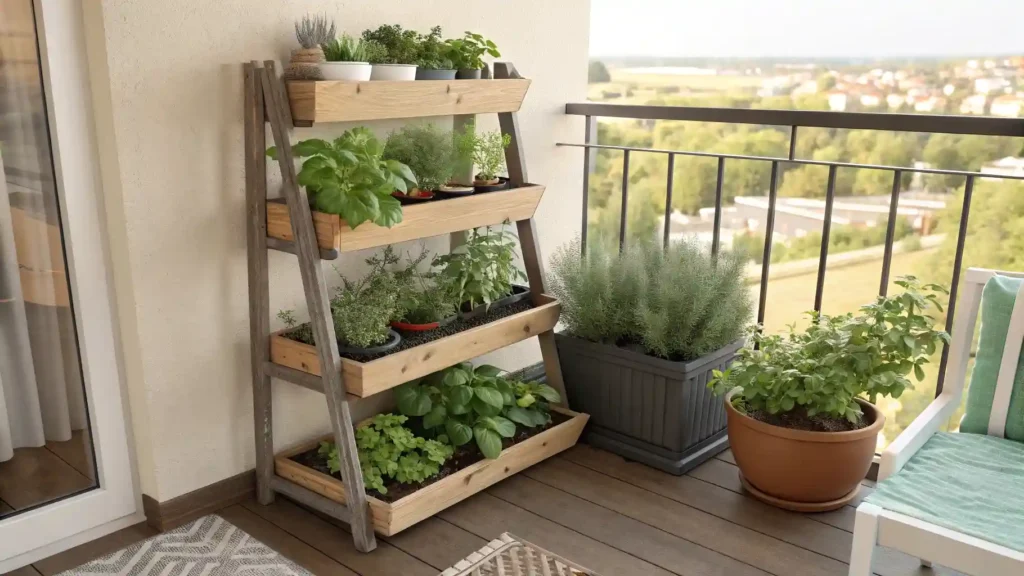
5. Window Box Tea Garden
How to Do It:
Install a window box planter outside your kitchen or bedroom window. Fill with herbs like stevia, basil, and fennel. Water regularly and rotate the box if needed for even sun.
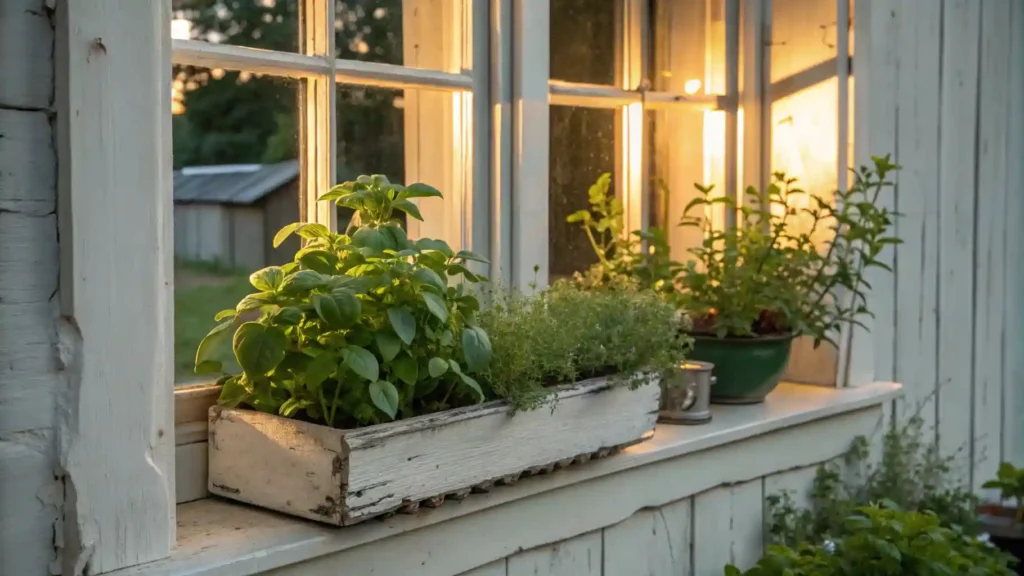
6. Bookshelf Herb Station
How to Do It:
Repurpose an old bookshelf. Line each shelf with waterproof lining and place small pots with herbs like sage, calendula, and mint. Ideal for indoor or covered patio spaces.

7. Mason Jar Herb Garden
How to Do It:
Fill mason jars with small rocks at the bottom (for drainage), then add potting mix and herbs like chamomile or rosemary. Arrange on a tray or shelf by the window.
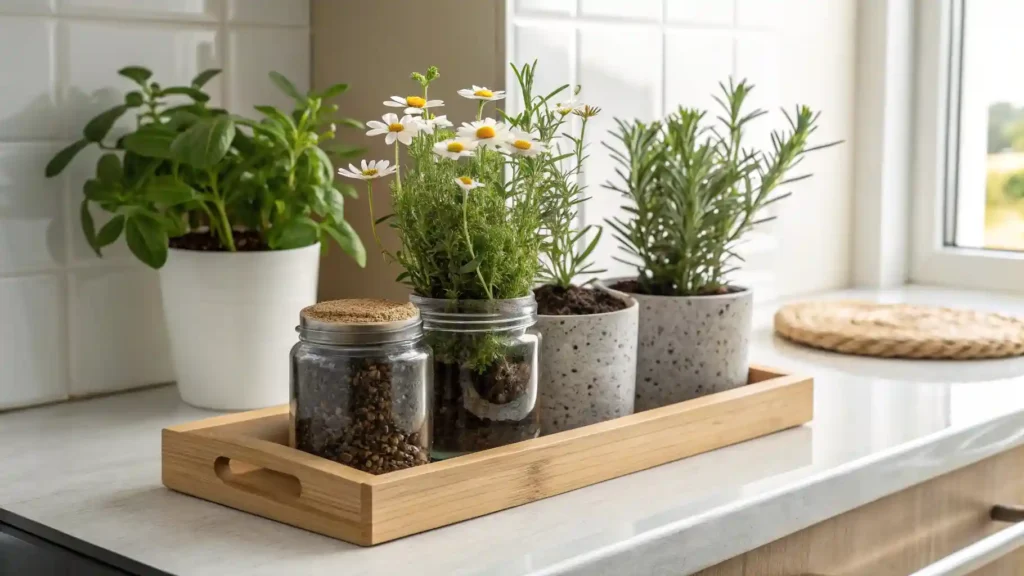
8. Tabletop Tray Garden
How to Do It:
Use a wide, shallow tray and fill with rich soil. Plant a mix of small herbs like lemon balm and thyme. Decorate with tiny garden signs or stones.
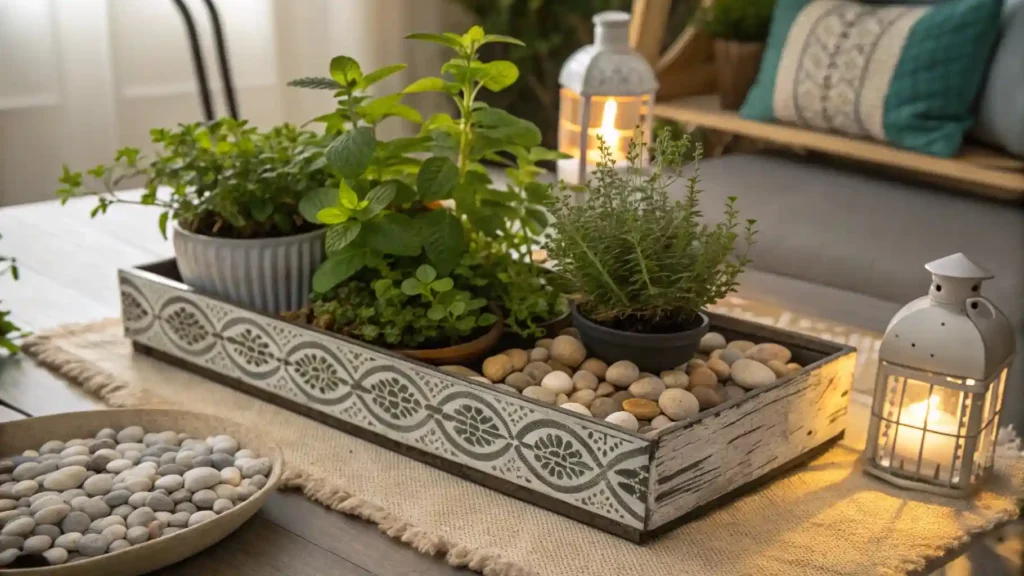
9. Balcony Rail Planters
How to Do It:
Install clip-on railing planters. Fill with herbs like oregano, parsley, and peppermint. Water from the inside edge so it doesn’t drip down.

10. Hanging Shoe Organizer Garden
How to Do It:
Take a canvas shoe organizer, fill each pocket with soil, and plant a different herb in each (e.g., thyme, sage, lemon balm). Hang on a fence or wall in partial sun.
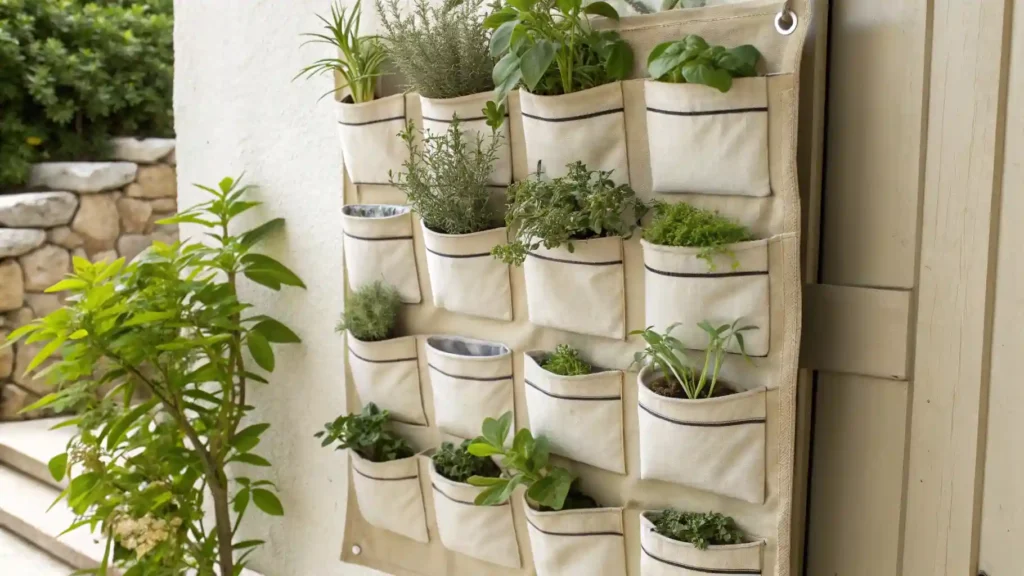
Tea Garden Tips for Beginners:
- Use compact herbs that thrive in containers
- Ensure good drainage in every planter
- Give herbs at least 4–6 hours of light daily
- Harvest gently and regularly to keep herbs healthy
- Use organic compost or natural fertilizer
try also : Amish laundry soap recipe at home
Final Sip
A tea garden doesn’t have to be big to be beautiful. With just a few pots, some sunlight, and a little love, you can turn any nook into a fresh and fragrant tea haven. Which idea are you most excited to try first?
Frequently Asked Questions (FAQ)
1. What are the easiest herbs to grow for tea?
Some of the easiest and most beginner-friendly herbs for tea include mint, chamomile, lemon balm, thyme, basil, and lavender. They grow well in small containers and don’t need too much maintenance.
2. Do tea herbs need full sunlight?
Most tea herbs prefer 4–6 hours of direct sunlight per day. However, if you’re growing indoors or have limited light, you can use LED grow lights to supplement.
3. Can I grow tea herbs indoors year-round?
Yes! As long as they get enough light and you maintain a consistent indoor temperature, herbs like mint, stevia, and chamomile can thrive indoors year-round.
4. What kind of containers are best for tea gardens?
Any container with good drainage holes will work. Teacups, mason jars (with rocks for drainage), hanging planters, and recycled cans are all great options for small spaces.

